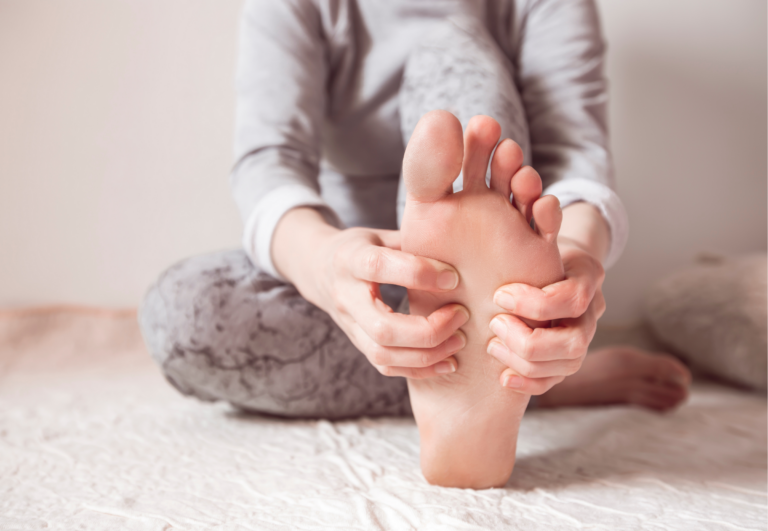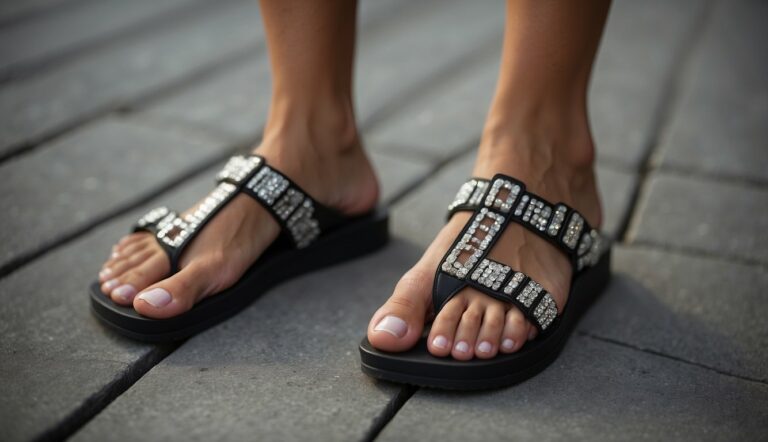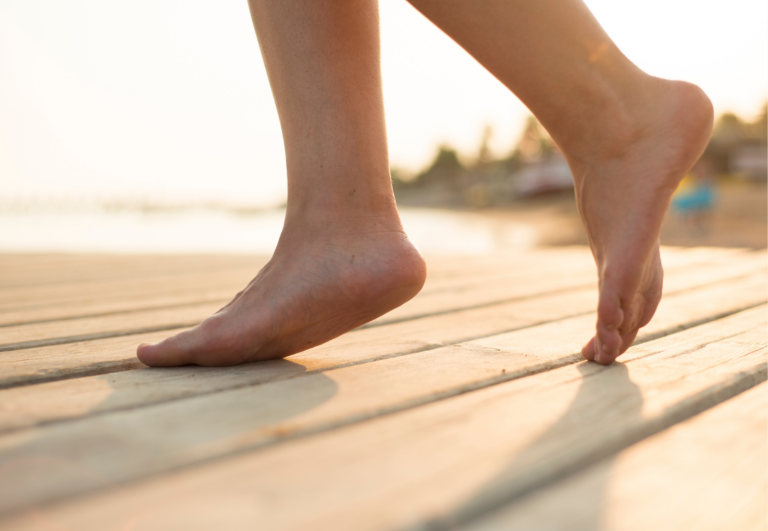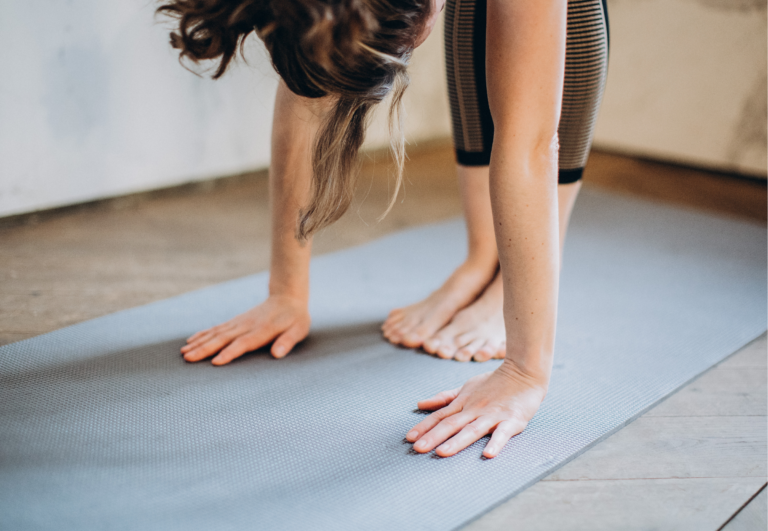How to Use Toe Spacers to Correct Toe Curvature: A Guide to Straighter Toes
Toe spacers are a practical tool for anyone looking to improve toe alignment and ease discomfort associated with toe curvature. In my experience using these, they’re especially beneficial for individuals whose toes have been cramped by tight shoes or for those who notice mild toe overlap or curling. The simplicity of toe spacers lies in their design, typically made from silicone or a soft material that fits between the toes to gently persuade them back to their natural position.
Using them is straightforward—select spacers that match the size of your feet and align them with the curves of your toes. I’ve found that for optimal comfort, it’s crucial to ensure that the spacers fit snugly but not too tightly. Regular use can gradually alleviate pressure on the toes and may contribute to correcting the curvature over time. It’s all about consistency; wearing toe spacers for short periods daily can foster improvement in toe alignment and overall foot health.
While the concept of toe spacers is simple, selecting the right product and using it correctly can make a significant difference. I take care to choose materials that are hypoallergenic to prevent skin irritation and to clean them regularly to maintain hygiene. Remember, each foot is unique, so personal comfort and the natural shape of your toes should guide your use of toe spacers. If there’s any doubt or if you have existing foot conditions, consulting a professional before beginning any new self-care regimen is always a wise choice.
How to Use Toe Spacers to Correct Toe Curvature
Toe spacers are unique tools designed to improve foot health by realigning the toes to their natural position. My experience with toe spacers has shown they are not only helpful for creating a more comfortable walking experience but also essential in enhancing overall foot strength.
Here’s a step-by-step guide along with explanations on how and why it works:
- Choose the Right Toe Spacers: Select toe spacers that are the appropriate size and material for your feet. They should be comfortable and not cause pain.
- Clean Your Feet: Start with clean, dry feet to ensure that the toe spacers stay in place and to reduce the risk of skin irritation.
- Insert Toe Spacers: Place the toe spacers gently between each toe, starting from the big toe and working your way to the little toe. Ensure they fit snugly but are not overly tight.
- Adjust for Comfort: Make sure the spacers are comfortable and that your toes are not being forced into an unnatural position. They should encourage a gentle stretch.
- Wear for Short Periods: Begin by wearing the toe spacers for short periods, such as 15-30 minutes a day, to allow your toes and feet to adjust to the new alignment.
- Gradually Increase Duration: As your toes adapt, gradually increase the time you wear the toe spacers. Some people work up to wearing them for a few hours each day or even during sleep.
- Consistent Use: For best results, use the toe spacers consistently. Toe realignment is a gradual process that requires regular use over time.
- Monitor Progress: Pay attention to changes in toe curvature and any discomfort. If you experience pain or worsening symptoms, discontinue use and consult a healthcare professional.
- Combine with Exercises: Incorporate foot and toe exercises to strengthen the muscles and enhance the corrective effects of the toe spacers.
How and Why It Works:
- Gentle Stretching: Toe spacers apply a gentle stretch to the toes, countering the contractive forces that lead to curvature.
- Realignment: By creating space between the toes, spacers encourage them to return to a more natural, straighter position.
- Muscle Rebalancing: As the toes spread, the muscles in the foot can become rebalanced, which supports proper toe alignment.
- Reduced Pressure: Spacers can reduce pressure on the toes from footwear, allowing the toes to straighten over time.
Remember that the effectiveness of toe spacers can vary, and they are not a cure-all solution for toe curvature. Severe cases may require medical intervention. Always consult with a healthcare professional for personalized advice and treatment options.

Proper Selection and Fitting of Toe Spacers
Before choosing toe spacers, it’s important to assess the fit and design to ensure maximum comfort and effectiveness for foot health.
Finding the Right Size and Fit
Size: Start by measuring the width between your toes. This will guide you in selecting the right size of spacers—neither too tight nor too loose.
- Small/Medium/Large: Many toe spacers come in these standard sizes.
Fit: The spacer should sit snugly between the toes without causing discomfort.
- Trial: Wear the spacers for a short period initially to test for any irritation or pressure points.
Comparison of Types and Brands
Material:
- Silicone Gel: Offers flexibility and a softer feel, favored for comfort.
- Firm Materials: Some prefer a firmer support which may offer more correction.
Design:
- Single Toe vs. Full Foot: Some spacers target the big toe only, while others extend to all toes.
- Recommended Use: Check if the design is meant for active use with footwear or for static use at home.
Brands: Research and compare different brands, as they can vary in material quality and design.
- Podiatrist Recommendations: Seek brands that have endorsements or positive reviews from foot care professionals.
In the end, ensure your selected toe spacers align with your foot’s shape and your comfort needs. Always consult a podiatrist for personalized advice, especially if you’re using them for foot conditions.
Incorporating Toe Spacers into Daily Life
Integrating toe spacers into your daily routine promotes better foot mobility and balance, while helping to reduce discomfort associated with toe curvature.
Daily Wear Recommendations
For optimal results, I suggest starting with shorter durations of wearing toe spacers and gradually increasing time as your toes adjust. Below is a suggested schedule to ease them into your daily life:
- Week 1: 10-15 minutes per day
- Week 2: 30 minutes per day
- Week 3: 45 minutes per day
- Week 4: 1 hour per day, or as comfortable
Listen to your body; if you experience discomfort, reduce the time accordingly.
Exercise and Activity Adaptations
Incorporating Exercises
While wearing toe spacers, gentle foot exercises can enhance their benefits. Consider the following:
- Toe Curls: Enhance the strength of foot muscles.
- Marble Pickups: Improve dexterity and movement.
Adapting to Activities
Here’s how you can adapt toe spacers with different activities:
- Yoga: Wear during sessions to increase balance and ground foot muscles.
- Running: Use after runs to help the feet recover and realign.
- Workouts: During cooldowns, add toe spacers to your stretching routine.
Remember, always prioritize comfort and gradually introduce spacers into high-movement activities.
Addressing Common Foot Conditions
Toe spacers can be an effective, non-invasive solution for various common foot issues. By realigning the toes, they alleviate pain and prevent the progression of conditions like bunions and hammertoe.
Toe Spacers as a Solution for Bunions and Overlapping Toes
Bunions and overlapping toes are often a result of narrow footwear that compresses the toes into unnatural shapes. Through consistent use, toe spacers work by gently separating the toes, promoting a natural toe alignment and distributing pressure evenly across the foot. This, in turn, may alleviate the discomfort caused by bunions and prevent the toes from overlapping.
Ideal for:
- People with bunions
- Those experiencing toe overlap
Expected outcomes:
- Reduced pressure on the joint
- Minimized overlapping of toes
Benefits for Hammertoe and Plantar Fasciitis
Hammertoe is a condition where a toe has an abnormal bend in the middle joint, causing pain and discomfort. Plantar fasciitis is characterized by pain in the heel due to inflammation of the plantar fascia. Using toe spacers can help stretch and strengthen the foot muscles, which can contribute to pain relief.
- Corrects toe deformity
- Reduces calluses
Plantar Fasciitis Assistance:
- Supports proper foot alignment
- May decrease heel pain
Note: For these conditions, it’s essential to complement toe spacer use with proper footwear and, if necessary, consult a healthcare provider for a comprehensive treatment plan.
Maintenance and Care of Toe Spacers
Maintaining toe spacers is crucial for hygiene and to ensure they continue to provide the intended benefits. Proper care extends their lifespan and ensures they remain safe and comfortable to use.
Cleaning and Hygiene
Toe spacers typically made from silicone or medical-grade gel are easy to clean due to their non-porous nature. Here’s how I keep mine clean:
- Rinse toe spacers in warm, soapy water after each use.
- Use a soft brush to gently remove any debris or buildup.
- Rinse thoroughly to remove all soap.
- Air dry completely before the next use.
It’s important to avoid using harsh chemicals which could degrade the materials. Regular cleaning prevents the growth of bacteria and ensures that the toe spacers remain hygienic for everyday use.
Lifespan and Replacement
The longevity of toe spacers varies depending on the material and frequency of use. Silicone and medical-grade gel spacers are quite durable but may need replacement over time. Consider the following for assessing lifespan and replacement:
- Inspect Regularly: Check for signs of wear and tear such as thinning, tears, or elasticity loss.
- Follow Manufacturer Guidelines: Manufacturers may suggest lifespan estimates, which can be used as a general guide.
- Be Mindful of Changes: If toe spacers start to feel uncomfortable or less supportive, it might be time for a new pair.
By following these practices, I ensure that my toe spacers remain in good condition and continue to function as intended, providing the necessary support for my toes without any hygiene concerns.





